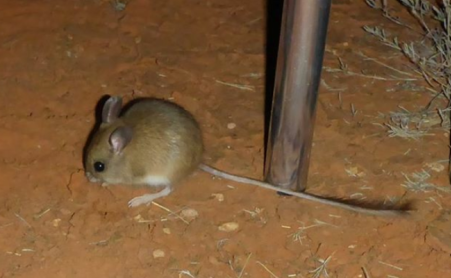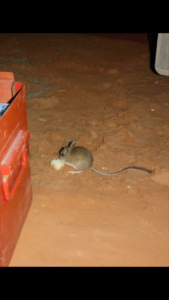
How to get rid of mice in Melbourne
How do I get rid of mice?
We’re currently in the depths of winter and we’re all trying to keep warm. But we certainly aren’t the only ones who struggle with the cold. That’s right, mice dislike the cold just as much as we do. Don’t be surprised if you’re currently sharing your home with mice. They pile into our homes at this time of year in droves. The most common question we get asked is how to get rid of mice?
There’s plenty you can do to help ensure these tiny animals don’t invade your home. Just like us, mice require food, water and shelter to survive. Take one of these necessities away and the chances of a mouse infestation are slim.
How do mice get inside my house?
The best way to prevent an issue is to ensure there are no entry points into your home. Check around your home for openings and remember that these creatures are tiny. If you can push a pencil into a gap then a mouse can enter. Common points of entry are around plumbing pipes, the hot water system, air conditioning and heating units and under doors. Seal any areas around penetrations with a substance that cannot be chewed, such as aviary wire. People often use expanding foam. This product is ineffective and unsightly. Mice can chew threw this substance in no time at all. Now inspect all doors and if a pencil can fit under, add a door sweep. This will not only stop draughts it will also stop insects and rodents from entering your home.
Brick veneer homes also have the issue of weep holes. These holes are intentionally built into the lower layer of bricks to allow the walls to drain and ventilate. An unfortunate consequence of weep holes is that they allow pests to enter the interior of your walls. Once inside the walls they will search for a way into the living areas of your home. If your home is in the construction phase then weep hole covers can easily be fitted by the brick layer. If your home is already built then grills can be retro fitted.
Another common entry point is via the roof. Look out for any overhanging trees and cut them back where possible. The trees might be located on your neighbour’s property so always consult them prior to any pruning or removal in order to keep the peace. Remember that rodents are excellent climbers so inspect for anything that leads to the roof and looks as if it could be scaled. Objects such as wood piles, scrap metal and anything else stacked against the house not only provides a fantastic place to hide, it may also provide a ramp to the roof.
Once mice or rats are on your roof it’s very difficult to prevent them from gaining entry into the roof cavity, particularly for a tiled roof. There’s just so many gaps that if you tried to close them all you’d drive yourself crazy. This is particularly so for older homes as the tiles may easily shift and mortar may have broken away. For colour bond roofs mice can usually enter via the gutter or via either side of the valleys. Gutter guard is a great product but if this is a path you choose be sure to purchase aluminium as opposed to plastic. The chewing power of rats and mice will tear through plastic very easily.
In many instances houses have been built on stumps and brick piers. Any home with a subfloor has a higher chance of an infestation of mice. Older homes with subfloors may have multiple gaps around the flooring that allow all types of creatures to enter the home. In instances like this exclusion may be near on impossible. You could attempt to crawl around the subfloor to check for potential entries but often your path is blocked by plumbing or gas pipes or ducting. The distance between the ground and floor level may also be too low to provide access.
Mice may enter your walls or roof but this doesn’t always mean that they can make there was into your actual home. Check for any holes in walls and close them off. An area that often has gaps is behind a wall oven. The walls need to be penetrated for gas and electricity and as it is concealed the builder or installer may not seal around these areas. This is also common for dishwashers. Penetrations for plumbing pipes, particularly under the sink are also common entry points. If a mouse is determined and can’t find a way into the home, it’s not uncommon for them to chew through plaster walls and skirting boards to gain entry. This is obviously hard to stop.
What are the mice eating in my house?
Now that you’ve done your best to exclude mice from your home it’s time to remove potential food supplies. Check around your home for potential food. Fruit trees and vegetable gardens provide a constant source of food for many pests. If you must have fresh fruit and veggies grown onsite, you must also respect the fact that rodents, possums, birds and even bats will be dining in your yard. Pick up any fallen fruit as often as possible and pick the fruit and vegetables when they are ripe. If you don’t need or want these trees or gardens then remove them. If your neighbours grow fruit and vegetables then this is something out of your control.

Dog food and even dog droppings can even be a source of food. Clean the dog bowl after every meal and regularly clean up any droppings. I often see dry dog food left in it’s packaging in the shed or garage. The packaging is plastic or cardboard and is easily chewed through. If you store large amounts of dog food put it into secure containers that cannot easily be chewed through.
You should inspect your bins and ensure they are not overflowing. If the lid is closed then entry cannot be gained. It’s also worthwhile to occasionally pressure wash your bins when they’re empty to reduce any lingering smells that might attract pests.
When there’s a food shortage rodents have been known to eat snails and slugs. If you see multiple empty snail shells around your home it’s likely due to the presence of rats and mice. There are excellent products available to kill these common garden pests and they have no impact on pets.
Now that the outdoor area of your home is clear of food it’s time to take a stock take of your pantry. Anything that’s contained within plastic or cardboard packaging can easily be chewed through. This includes bread, cereal boxes, lollies and the like. These items need to be put into sealed tupperware.
If mice have found their way into your home then a thorough clean is essential. The toaster needs all bread crumbs removed, dirty dishes need to be washed daily and the contents of any indoor bins need to be emptied. Wipe up any spills and ensure the kids school bags and bedrooms have no food items in them. If there’s nothing to eat there’s no reason for them to stay!
Now ensure there are no dripping taps indoors or outdoors. Mice don’t require much if any water at all but a constant source of water is required and will attract other pests including rats, cockroaches, silverfish and termites. Fix all leaking taps and pipes as a priority.
Signs of a mouse infestation
- Scratching, gnawing, squeaking;
- Live sightings;
- Carcasses;
- Droppings;
- Musky odours;
- Agitated pets;
- Chewed food packaging.
Mouse Extermination Melbourne
If you’ve done everything you can to prevent a mouse infestation and it’s still a problem then it’s time to call a professional mouse exterminator. We can see things that you might have missed. We also have many tricks up our sleeve to eliminate these pesky house invaders. This can include:
- Rodenticides (rodent baits);
- Snap traps;
- Glue boards; &
- Tracking powders.
We hope you’ve found our advice on how to get rid of mice useful. Please read our Mice Control and Rat Control pages if you require more assistance.
If you have a problem and require professional assistance in Melbourne be sure to call us on 1300 665 573. Alternatively, you can complete the Contact Us form and a pest manager will contact you at the next available time.
